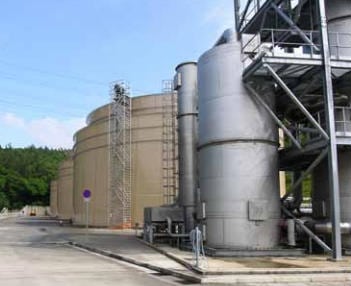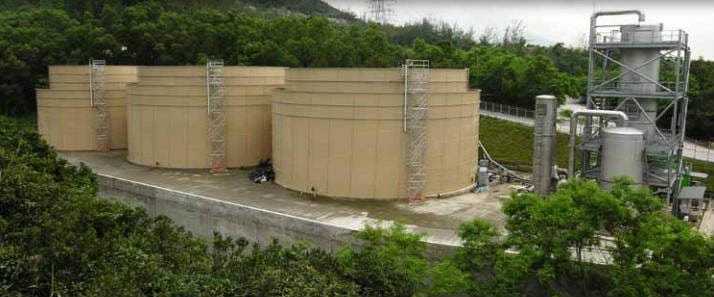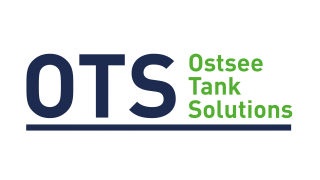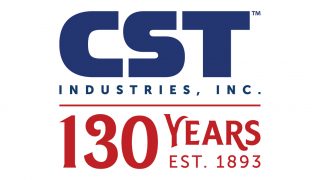Hong Kong – a city of seven million inhabitants – is one of the very few cities in the world with a well thought-out master plan and coherently implemented infrastructure to manage its solid waste. It has proven to be not only cost-effective, but also environmentally responsible for future generations. The Hong Kong Government’s Waste Disposal Plan consists of an interwoven network of three very large landfills located in the remote areas of the New Territories outside the city.One of the world’s top waste management companies based in the Greater China region, Swire SITA manages the design, development and operation of two of the new generation containment landfills which form part of Hong Kong’s disposal and management services.
While Swire SITA is committed to waste reduction through resource recovery and waste-to-energy, solid waste residues cannot be totally eliminated and engineered containment landfills remain the ultimate means for waste disposal. Swire SITA’s process includes waste collection and deposition where waste is placed, compacted and covered to reduce odors and the ingress of water.
The landfill design includes a secure liner system and a cap to prevent water ingress and gas egress. Drainage systems are built within the landfill to collect liquid effluents (leachate) that are further treated in specifically designed wastewater treatment plants. The open-air tanks that store the leachate comprise internal tanks to contain the waste surrounded by external containment tanks, which are required to meet stringent requirements for safety.
Since Hong Kong’s waste disposal plan was first approved in 1989, Swire SITA’s leachate storage capacity has grown from three tanks to 30. During its most recent increase in capacity, which began in 2003, Swire SITA commissioned five tanks from its
 preferred vendor and tank manufacturer, CST Industries. Based in the United States with tanks in more than 120 countries, CST Industries manufactures bolted and factory welded tanks for storage of potable water, wastewater, leachate, solids, chemicals, minerals, foods and agricultural liquids.
preferred vendor and tank manufacturer, CST Industries. Based in the United States with tanks in more than 120 countries, CST Industries manufactures bolted and factory welded tanks for storage of potable water, wastewater, leachate, solids, chemicals, minerals, foods and agricultural liquids.
CST Industries provided cost estimates for 10 Columbian TecTanks – five internal open-air tanks and five external containment tanks – in 2003 for inclusion in a fixed price proposal for consideration by the Hong Kong Government. However, nearly one year later when the project was approved and the order placed, Swire SITA and CST faced a challenge: in 2004 the cost of steel had risen dramatically, boosting the actual cost of the 10 tanks by nearly $400,000 above the fixed price estimate.
Upon consideration, CST returned with the proposal that Swire SITA retain its original capacity requirement, but reduce the number of tanks required from 10 to six by simply increasing the size of the tanks. In addition, with Swire SITA’s primary concern
Continued below

of safety in mind, CST recommended the use of its TecStore tanks, which offered the same technologically advanced coatings for abrasion and corrosion resistance, but utilized a jack system in place of a scaffolding system for installation.Location of the tanks also proved a challenge, as a steep embankment, concrete wall, a river and an alley confine the remote area. Swire SITA was able to obtain minimal additional space for placement of the three larger tanks.
The result was the construction of the three largest TecStore tanks in that part of the world. The system comprises one inner tank of 56’ dia x 46’ tall surrounded by an outer tank of 70’ x 33’ along with two additional inner tanks of 78’ x 46’ surrounded by two containment tanks of 90’ x 38’. The capacity remained identical to the original proposal, but the manufacturing cost was reduced dramatically.
The jack system allowed the tanks to be built from the ground upward, which provided a relatively fast and easy installation and met stringent safety guidelines. The tanks were erected by CST-trained contractors in Hong Kong. The tanks were delivered to the site in summer 2005. Installation began in September and was completed seven weeks later in November 2005.
The use of the jack system saved an estimated 33% in installation time.The three new tanks were commissioned in December 2005. Like the initial three tanks installed by CST in 1994 for Swire SITA, these tanks are effectively storing leachate and provide a cost effective method of protecting the environment as well as the wellbeing of the people of Hong Kong.
ABOUT THE AUTHOR
Tom Renich is responsible for international sales, marketing and operations for all CST divisions: Columbian TecTank, Aquastore and Vulcan Tanks Ltd. He has more than 23 years of experience in bolted tanks for both liquid and dry bulk use. CST Industries, an ISO 9000 Certified company has been in business for more than 110 years and has tanks in more than 180 countries. Visit www.tanks.com for more information.CST Industries, Inc.
844-44-TANKS
sales@cstindustries.com

